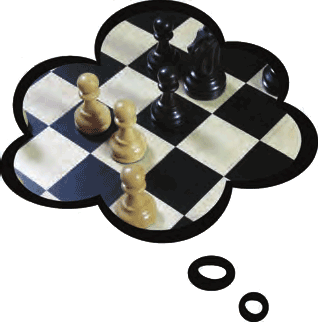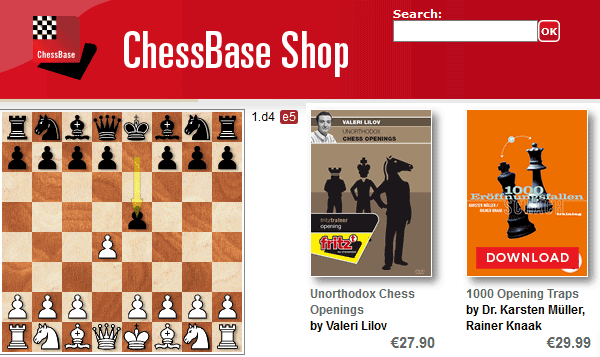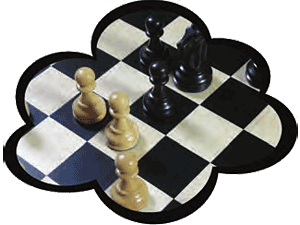Pondering some unusual first moves and their implications

A good friend of mine, FM Mark Ong Chong Ghee, pulled off this stunt two decades ago at the Singapore Cairnhill Open event against a fellow national player, who immediately exclaimed, “What nonsense is this?” before choosing to reply with a King’s Indian set-up, which I think is a good response to the pawn punt. This didn’t stop Black from getting crushed in 26 moves.
Mark noted that such moves are akin to saying, “I can play any garbage and beat you”, clearly showing no respect for the opponent. However, he had his rationale for doing so. A few years prior to that game, his opponent had played 1 c3 against him in a school event and behaved condescendingly after winning. So it was sweet ironic revenge for the Singaporean FM to win with 1 a3. However, he also had another, more prosaic reason for his opening choice. He remarked that, “At the time, I was getting better results with Black than White for some reason, so I moved 1 a3 to ‘play Black’”.
Another incident involving a sub-optimal opening choice I remember was when a local politician was gracing an opening ceremony and was invited to make the first move on top board for IM Hsu Li Yang. The Member of Parliament decided on 1 d3 (which is not too bad, in any case), and although Li Yang could have taken back the move after the picture taking and applause formalities, he decided to let the move stand and still made short work of his opponent.
Now, before you start to think, “What a load of tosh” with regards to this article, consider that Gawain Jones played 1 a3 in a 4NCL Rapidplay event in 2013 and Simon Williams 1 a4 two years ago – versus, not surprisingly, lower-rated opposition. Andrew Greet went one better by playing 1 h3 and 2 a3 at the 2013 World Mind Sports Games and winning rather handily. Williams probably topped that feat by going 1 f3 and 2 Kf2 in the 1999 British Championship, though he did it to win a wager. Let’s not forget either the one and only Michael Basman who beat Jim Plaskett with 1 h3 (and not surprisingly, the space-Grobbing g2-g4 showed up soon enough) at the 1991 British.
Before you get mad at your opponent for punting such a move as 1 h3, consider that White is at worst giving up his initial extra move and if he starts to play properly after that, then a fight is still on. Ironically, it might be even possible for White to turn a ‘pass’ like 1 h3 or 1 a4 into a useful move in particular opening lines. If you don’t believe me, read on.
Surfing through playchess.com’s selection of live games a few days ago, the following game between two near-2500s caught my eye.

[Event "Kazakh Championship, Almaty"] [Site "?"] [Date "2016.??.??"] [Round "?"] [White "Kuderinov, K."] [Black "Khusnutdinov, R."] [Result "1-0"] [ECO "A06"] [Annotator "Junior Tay"] [PlyCount "55"] [EventDate "2016.??.??"] [SourceTitle "Chess 2016 #08"] [SourceDate "2016.07.24"] 1. h3 ({This is not the first time Kuderinov has ditched a tempo on move one. According to the Megabase, he has punted} 1. a3 {on four occasions, with a perfect score (!) versus 2100-2400+ types.}) ({GM Adorjan of 'Black is OK' fame was probably in one of his 'black' periods when he started 1 Nf3 d5 2 h3 and beat the middle Polgar with} 1. Nf3 d5 2. h3 {and beat the middle Polgar with} Nd7 3. d4 Ngf6 4. e3 e6 5. c4 Be7 6. Nc3 O-O 7. b3 b6 8. Bb2 Bb7 9. Bd3 dxc4 10. bxc4 c5 11. O-O cxd4 12. exd4 Re8 13. Re1 Bf8 14. Qe2 a6 15. Rad1 Qc7 16. a3 g6 17. Ng5 Bg7 18. Nge4 Nxe4 19. Nxe4 {. Now Black lashed out with} f5 $6 20. Ng5 e5 $4 {, only to run into} 21. c5 $1 b5 22. Bc4+ $1 {and since the bishop cannot be taken due to smothered mate after 23 Qxc4+, she had to give up material with} Kf8 23. Ne6+ Rxe6 24. Bxe6 Re8 25. Bxd7 Qxd7 26. d5 Bxd5 27. Qd2 Rd8 28. Bxe5 {and Black resigned in Adorjan-So.Polgar, Budapest 1995.}) ({ Regarding the note to Black's seventh move below, here's the corresponding position in the Meran, as played in Kramnik-Duppel, Bonn (simul) 2004:} 1. d4 d5 2. Nf3 c6 3. c4 e6 4. e3 Nf6 5. Bd3 Bd6 6. Nc3 Nbd7 7. e4 dxe4 8. Nxe4 Nxe4 9. Bxe4 O-O 10. O-O e5 11. dxe5 Nxe5 12. Nxe5 Bxe5 {. Kramnik nabbed a pawn after} 13. Bxh7+ Kxh7 14. Qh5+ Kg8 15. Qxe5 {and won in 50 moves. What's also interesting is that GM Khusnutdinov has played this line with White versus Mahmudov (Tashkent 2014), so perhaps Kuderinov was trying to move order him into this reversed Meran.}) 1... d5 2. Nf3 c5 3. c3 {White is preparing to play a reversed Slav set-up. Kuderinov's secondary line versus 1 d4 is the Semi-Slav (he usually essays the Nimzo-Indian), and hence, he heads for familiar territory. GM Susanto Megaranto also on occasion plays for a Slav (or Caro-Kann) with one extra tempo, starting with 1 c3.} Nc6 4. d4 e6 5. e3 Nf6 6. Bd3 Bd6 7. O-O {We're now in a reversed Semi-Slav, Meran variation with an extra h2-h3 for White.} b6 $5 ({Playing b2-b3 against the Semi-Slav is a favourite set-up of Norwegian GM Simen Adgestein. What's even more interesting here is that if the colours were reversed and without the extra h-pawn punt, the main line of the Meran would run} 7... O-O 8. Nbd2 e5 9. dxe5 Nxe5 10. Nxe5 Bxe5 {and now the main move is to make luft with the h-pawn! Thus in essence, White has won a move over the main line Meran if reaching this position. --- The significance of the h-pawn being nudged forward is that after} 11. e4 dxe4 (11... Bc7 {is better}) 12. Nxe4 Nxe4 13. Bxe4 {, White has the better position as there is no 13...Bxh2+ followed by ...Qh4+ winning back the bishop. A recent game went} Qh4 14. Re1 Bc7 15. Qf3 Rb8 16. Bd5 Qd8 $4 17. Bg5 $1 Qd6 ( {not falling for} 17... Qxg5 18. Qxf7+) 18. Be7 Qh2+ 19. Kf1 Bd7 20. Bxf8 Rxf8 21. Rad1 Ba5 22. Re7 Be6 $4 23. Rxe6 Rd8 24. Re8+ {1-0, Frosch-Deutschmann, Graz 2014.}) 8. dxc5 Bxc5 ({Black should consider recapturing with the pawn,} 8... bxc5 {, to keep a firmer grip on the centre.}) 9. Nbd2 O-O 10. b4 Be7 11. Bb2 Bb7 12. a3 Rc8 13. Rc1 Qc7 $2 {Amazingly, this turns out to be the beginning of the suffering for Black. This natural move which connects the rooks allows White a standard Meran expansion with an additional tempo, since the queen has to retreat once the c-file is opened. Suddenly White finds himself two moves up on the black side of the Meran variation.} 14. c4 Qb8 15. cxd5 Nxd5 {With the bishop pair pointing menacingly at the black king, White sends his queen's knight in that direction too with no prizes for guessing his intentions.} 16. Ne4 $1 Nf6 17. Ng3 Rfd8 18. Qe2 Rd7 19. Bb1 Ne8 $2 {This move exacerbates Black's problems. Now the white pieces flood in like a tidal wave.} 20. b5 $1 ({Black was probably anticipating the standard Meran advance} 20. e4 g6 21. e5 Bf8 {, with a slight spatial edge for White.}) 20... Nd8 {Forced. The significance of ...Ne8 is felt now as the h5-square is no longer covered.} ({As such, Black cannot play} 20... Na5 {because after} 21. Ne5 Rdc7 {, White has} 22. Bxh7+ $1 Kxh7 23. Qh5+ Kg8 24. Qxf7+ Kh7 25. Qg6+ Kg8 26. Qxe6+ Kh7 27. Qg6+ Kg8 28. Nf5 Bf6 29. Rxc7 Qxc7 30. Rd1 {and there is no good way to stop Rd7 winning.}) 21. Ne5 {Here comes the cavalry...} Rxc1 22. Rxc1 Rc7 { Trying to trade pieces to alleviate the pressure, but White is having none of it.} 23. Rd1 Nf6 $4 {Valiantly trying to shore up the kingside, but it's too little too late now.} ({Perhaps better is} 23... Qc8 {, although after} 24. Qd3 g6 25. Qd4 Bf6 26. Ne4 Bxe4 27. Bxe4 {, White has a distinct positional advantage due to the bishop pair and complete control of the d-file.}) 24. Ng4 $1 {It's the beginning of the end as the all-important defender of the king's realm, the f6-knight, is forcibly dislodged.} Nd7 (24... Nxg4 25. Qxg4 g6 26. Nh5 Rc5 27. Nf6+ Bxf6 28. Bxf6 {is another sad situation for Black.}) 25. Nh5 { As the Dutch Eurodance group Vengaboys's most successful single goes: "Whoah! We're Going To Ibiza. Whoah! We're Gonna Have A Party!"} f6 {Trying to blunt the forthcoming onslaught. And now for the well-deserved mortal blow:} 26. Nh6+ $1 Kh8 ({Of course not} 26... gxh6 27. Qg4+ Kf7 28. Bxh7 Bf8 29. Qg6+ Ke7 30. Bxf6+ Nxf6 31. Qxf6+ Ke8 32. Bg6+ Nf7 33. Qxe6+ Re7 34. Nf6# {.}) 27. Qg4 Bf8 28. Nxf6 $1 {Is this aesthetic looking or what?} ({There is no point resisting in view of} 28. Nxf6 Nxf6 29. Bxf6 Nf7 30. Nxf7+ Rxf7 31. Rd8 Qc7 32. Qxg7+ {.} ) 1-0
OK, maybe you’re not convinced that 1.h3 might be a finesse. Perhaps I’m over thinking here. How about, though, the next example by the current world champion?

[Event "World Blitz Championship, Astana"] [Site "?"] [Date "2012.??.??"] [Round "?"] [White "Carlsen, Ma"] [Black "Radjabov, T."] [Result "1-0"] [ECO "A00"] [Annotator "Junior Tay"] [PlyCount "63"] [EventDate "2012.??.??"] [EventType "blitz"] [SourceTitle "Chess 2016 #08"] [SourceDate "2016.07.24"] 1. a4 $5 {At this point in the tournament, Magnus was two and a half points behind Grischuk (and trailing Karjakin by two points), so perhaps decided to have some fun, since the two leaders were unlikely to be caught.} ({Magnus also played} 1. a3 {three times in 2010, albeit only in rapid and blitz events. }) ({Regarding the next note, Black moves the a-pawn in the Budapest in any case after} 1. d4 Nf6 2. c4 e5 3. dxe5 Ng4 4. Nf3 Bc5 5. e3 Nc6 6. a3 a5 { to keep his bishop on the g1-a7 diagonal.}) ({In the conventional Four Knights Game, the main line of the 7...Ne7 variation runs} 1. e4 e5 2. Nf3 Nc6 3. Nc3 Nf6 4. Bb5 Bb4 5. O-O O-O 6. d3 d6 7. Bg5 Ne7 8. Nh4 {.}) 1... e5 ({White's first move will also be useful if Black allows a reversed Budapest:} 1... d5 2. Nf3 c5 3. e4 dxe4 4. Ng5 Nf6 5. Bc4 {, as in Staples-Baker, British Championship, Chester 1979. The a2-a4 move allows the bishop to retreat to a2 if required and White might be able to play a rook lift via a3 too.}) 2. e4 Nf6 3. Nc3 Nc6 4. Nf3 Bb4 5. Bb5 O-O 6. O-O d6 7. d3 Bg4 8. Ne2 $1 a6 {Radjabov probably realised that he cannot play the main way in the Four Knights set-up (see above) and so decided to go his own way.} ({Here moving the knight to the edge loses after} 8... Nh5 $4 9. Bxc6 bxc6 10. c3 {, as the bishop gets caught in a Noah's Ark trap after} Bc5 11. b4 Bb6 12. a5 {.}) ({The second most popular line in the 7...Ne7 Four Knights is to trade on f6 so it makes good sense to play} 8... Bxf3 9. gxf3 Ne7 ({note that the standard} 9... Nh5 $2 { is once again not possible after} 10. Bxc6 bxc6 11. c3 {and the bishop is snared}) 10. c3 Bc5 11. f4 {and we have reached in reverse a game between Vallejo Pons and Granda Zuniga with an extra a2-a4 included.}) 9. Bxc6 bxc6 10. Ng3 Nh5 11. h3 Nxg3 12. fxg3 Bd7 13. g4 Bc5+ 14. Kh1 Qe7 {Magnus has achieved the type of position he is best at, a sound, technical one with space in which to manoeuvre. He also has a little something to bite on in terms of Black's queenside pawn weaknesses and a potential outpost on f5. His forte, improving his position slowly but surely, now comes into play.} 15. Qe1 f6 16. Nh4 g6 17. Bh6 Rf7 18. Rb1 Bb6 19. b3 d5 20. Nf3 Re8 21. Qg3 Bc5 22. Rbe1 dxe4 $6 { Finally, Radjabov loses patience and with this move, White gets the chance to exploit Black's weakened queenside pawns.} 23. dxe4 Bd6 $6 {The bishop has no future here.} 24. Re2 c5 {And now the dark-squared bishop is just another pawn. } 25. Nd2 $1 {Paving the way to switch the queen over to the other sector.} Be6 26. Qd3 g5 $2 {Sacrificing the a6-pawn with the aim of using the tempo gain to play on the kingside. However, that's not a problem for Magnus, the consummate defender.} 27. Qxa6 Kh8 28. Nc4 $1 {Magnus times it perfectly. He just has enough time to trot his a-pawn down the board with serious effect before his bishop on h6 is trapped for good.} Bxc4 ({Black cannot snare the entombed bishop without losing ground on the queenside:} 28... Rg8 29. Nxd6 cxd6 30. a5 Rg6 31. Qa8+ Rg8 32. Qc6 Rg6 33. a6 Rxh6 34. Ra1 Qa7 ({or} 34... Bd7 35. Qb6 Qe8 36. a7 Bc6 37. Qxc6 Qxc6 38. a8=Q+ Qxa8 39. Rxa8+) 35. Qe8+ Kg7 36. Qxe6 { and wins.}) 29. Qxc4 Rg8 30. h4 {The bishop cannot be caught.} gxh4 31. g5 $1 Rg6 32. Ref2 1-0
I would like to end this article with the caveat that I’m not advocating such opening play. The key issue is rather that when someone punts such a brazen first move against you, don’t get all riled up. It’s only a tempo at best, but if you’re careless, your opponent might be able to turn it into a useful move, especially in a reversed version of an opening that they are strong in.
The above article appeared in the August 2016 of the British magazine CHESS

CHESS Magazine was established in 1935 by B.H. Wood who ran it for over fifty years. It is published each month by the London Chess Centre and is edited by IM Richard Palliser and Matt Read. The Executive Editor is Malcolm Pein, who organises the London Chess Classic.

CHESS is mailed to subscribers in over 50 countries. You can subscribe from Europe and Asia
at a specially discounted rate for first timers here, or from North America here.
Interested in unorthodox openings and traps? There are a number of interesting ChessBase DVDs on the subject. The best way to find them: go to the Position Search page and enter the moves on the board (it is useful to remember this function!).

We particularly recommend the DVD Unorthodox Chess Openings by Valeri Lilov, who devotes 24 lectures to various unorthodox openings - some more popular with super GMs like Alexander Morozevich and others less known - yet all aiming at one and the same goal: to strengthen your opening repertoire and provide you with more weapons for the opening stage. The Chigorin Defence, the Chicago Gambit, and Grob’s Attack are among the systems included for White, with the Hippopotamus Defence and the Elephant Gambit are intended for Black. Lilov effectively teaches the best plans and ideas in each of these unique openings and guarantees success with each and every one of them. Video running time: 5 hrs 16 min.




























